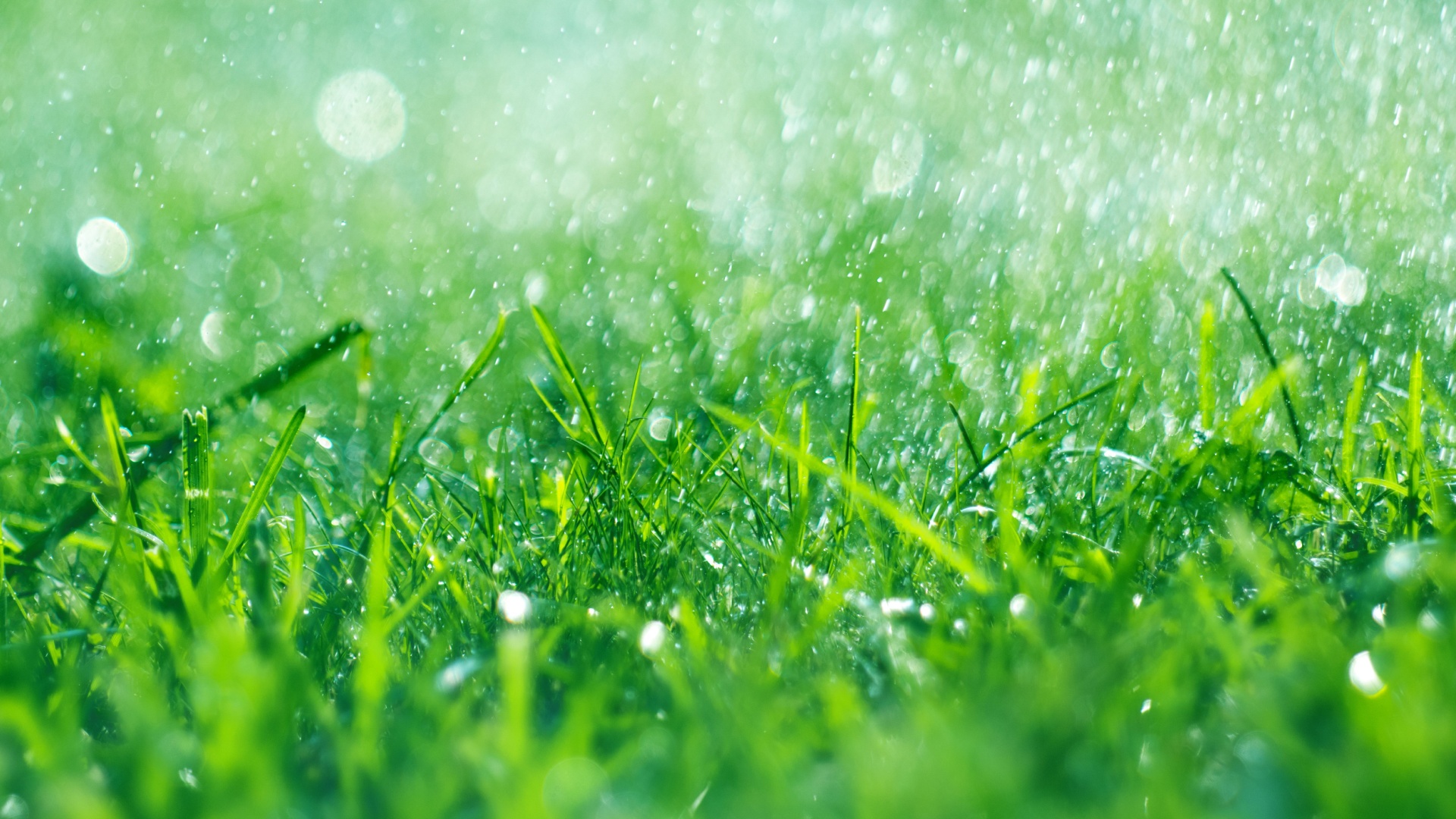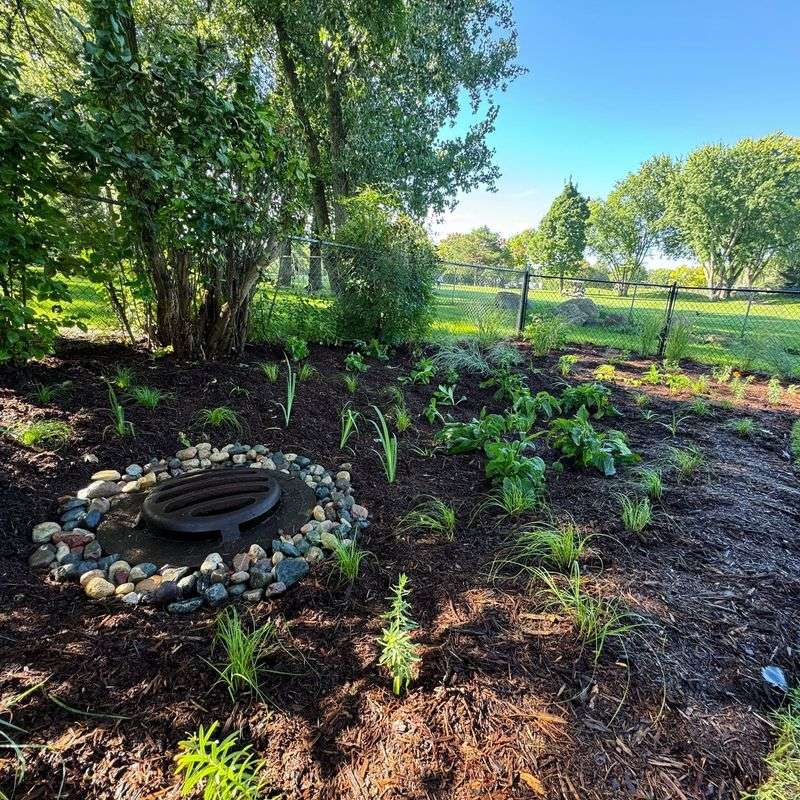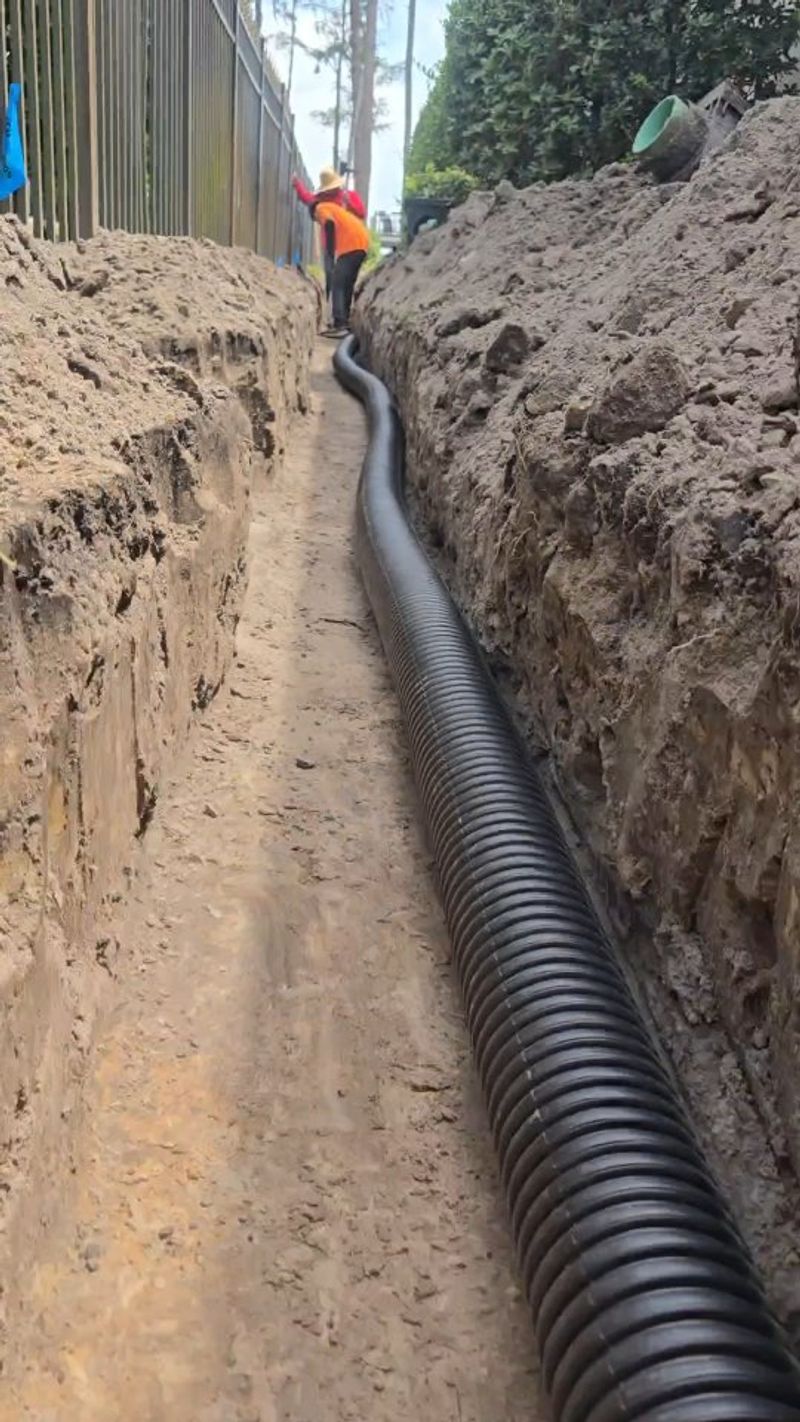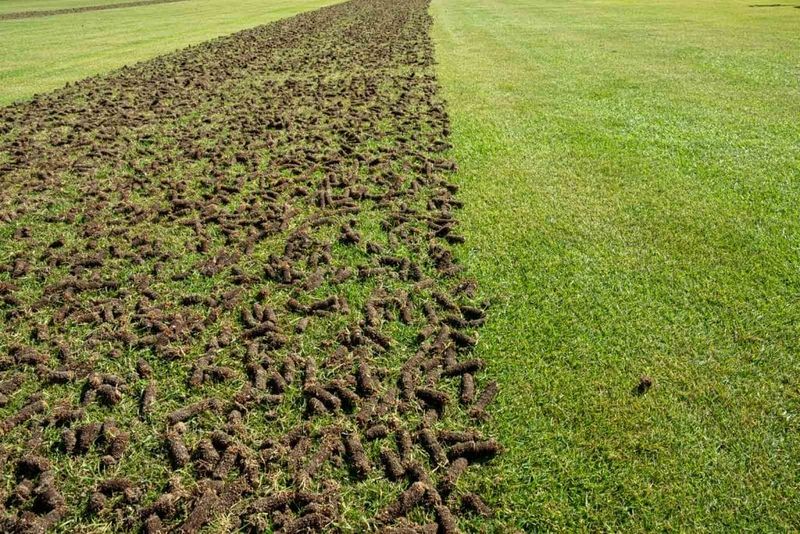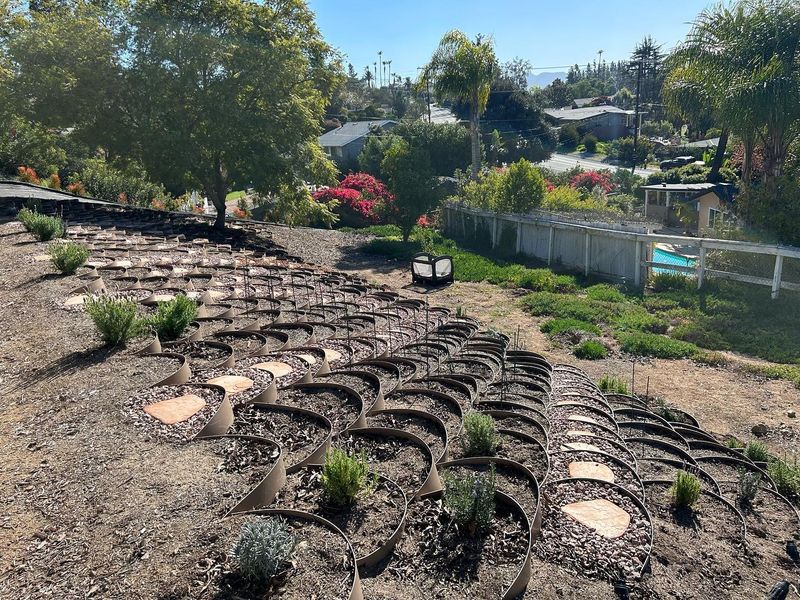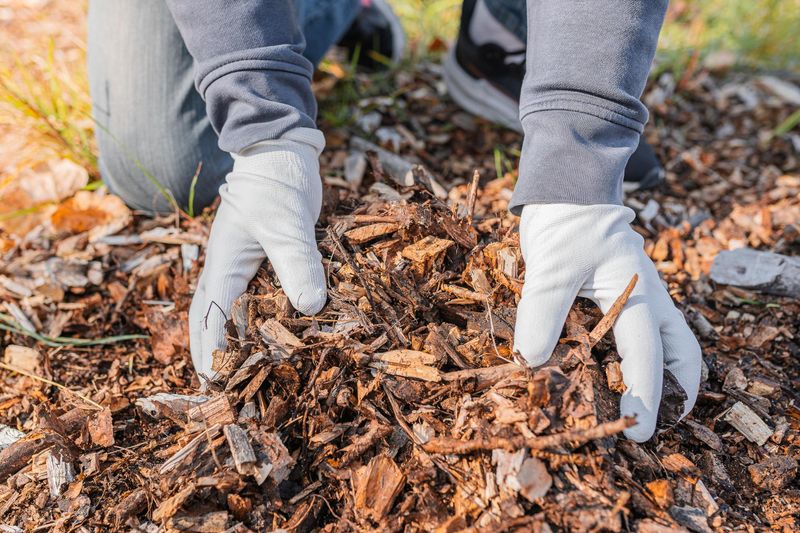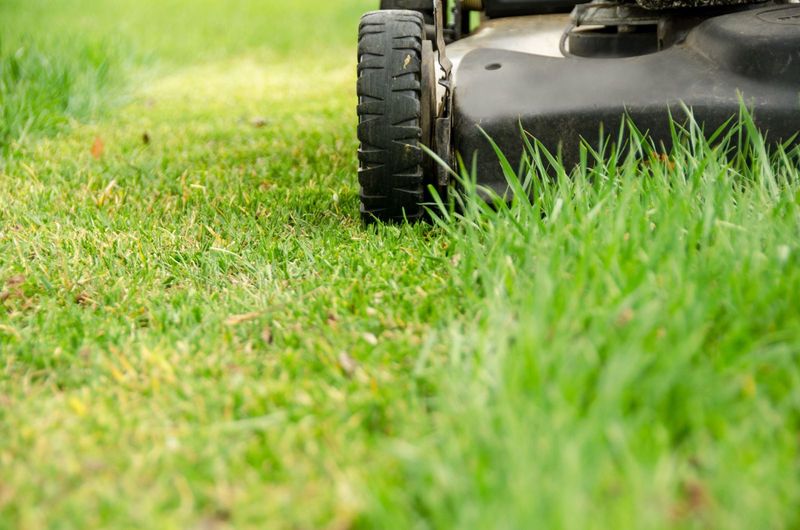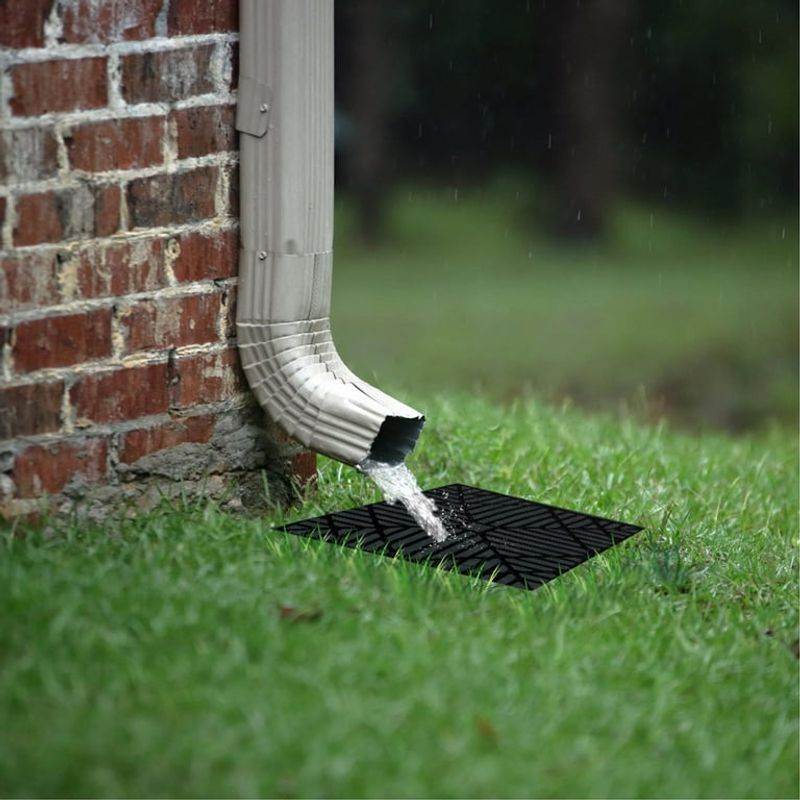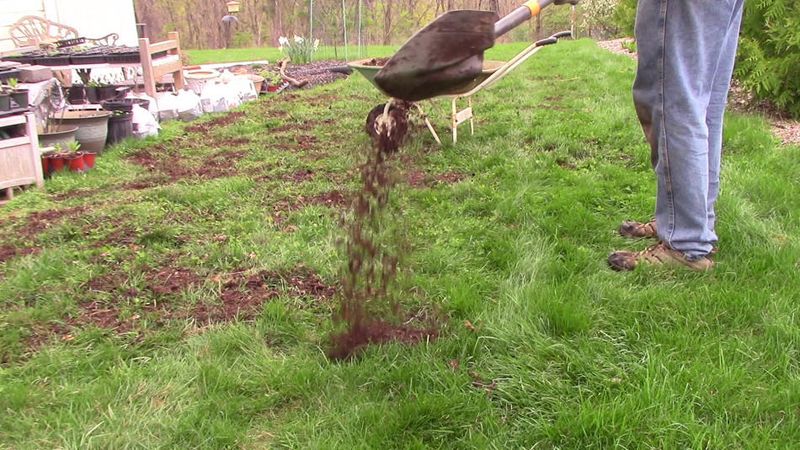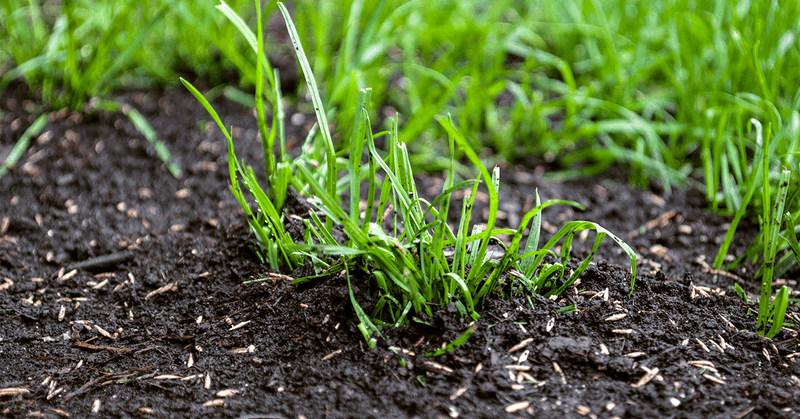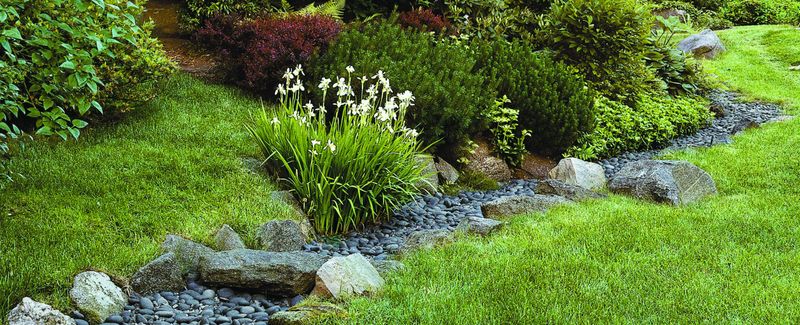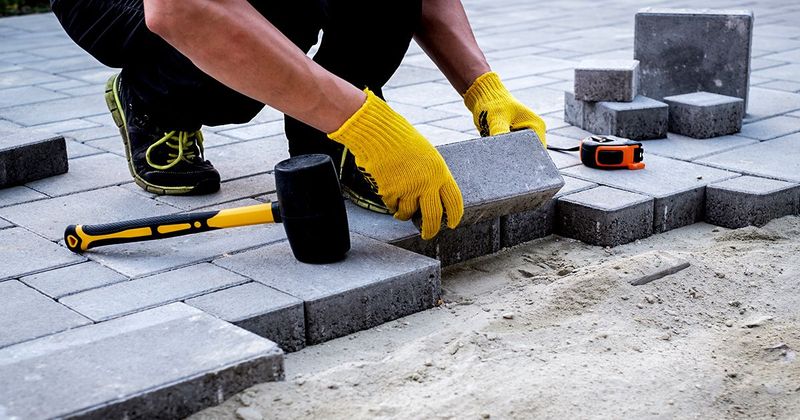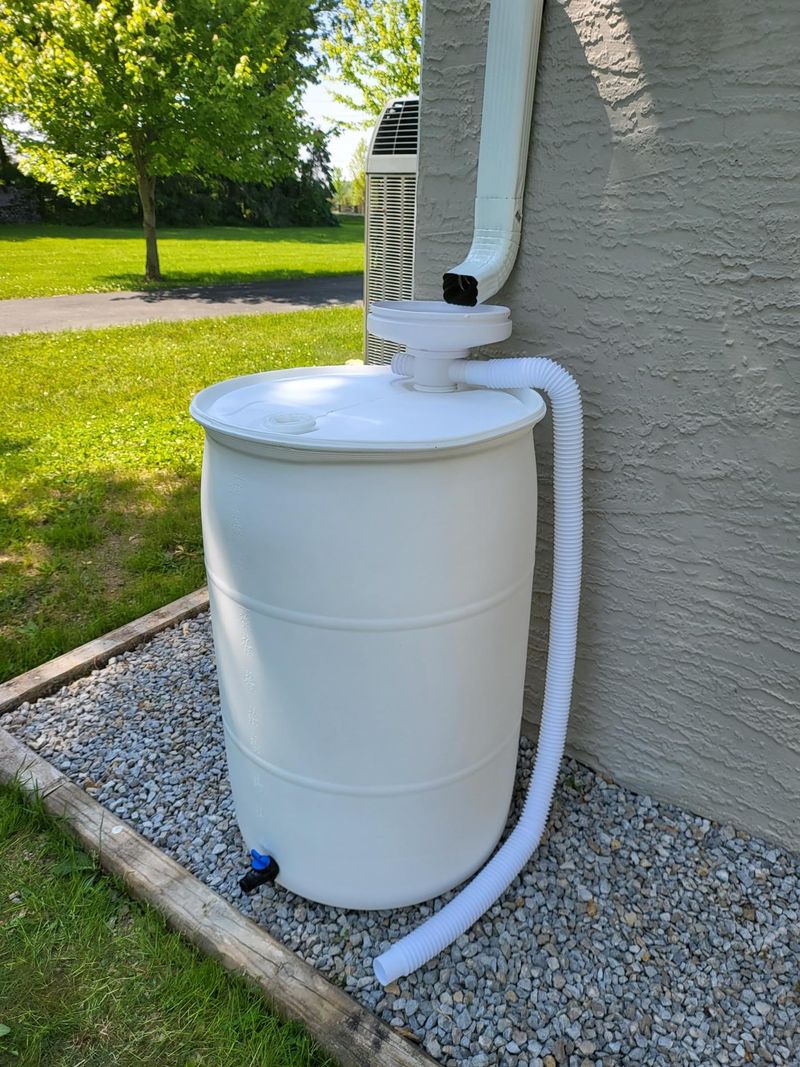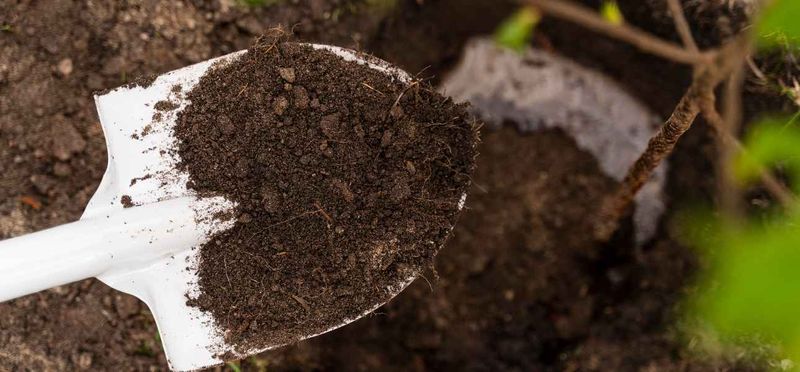Too much rain can turn a healthy lawn into a soggy, patchy mess. Pooled water, compacted soil, and root rot are just a few of the problems heavy rainfall brings. But with a few smart moves, you can protect your yard and help it bounce back fast.
These 13 easy tips will keep your grass strong, green, and thriving—even during stormy summer weeks.
1. Create a Rain Garden
Rain gardens are shallow depressions planted with water-loving native plants that collect runoff from your lawn. They act like natural sponges, soaking up excess water that would otherwise flood your grass.
The deep roots of rain garden plants create channels for water to penetrate the soil quickly. Position your rain garden in a low spot where water naturally flows, and you’ll protect your main lawn while creating a beautiful landscape feature.
2. Install French Drains
French drains are gravel-filled trenches with perforated pipes that redirect water away from problem areas. When heavy rain strikes, these underground drainage systems quietly carry water away before it can damage your lawn’s root system.
Digging a trench that slopes away from your lawn and filling it with gravel and a perforated pipe creates an escape route for excess water. The water enters through the gravel, flows into the pipe, and exits far from your precious grass.
3. Aerate Your Soil Regularly
Punching small holes throughout your lawn might seem counterintuitive, but aeration creates pathways for water to move deeper into the soil. Compacted soil is the enemy during heavy rain because water pools on the surface instead of being absorbed.
Rent an aerator in spring or fall and make several passes over your lawn. The removed soil plugs allow oxygen, water, and nutrients to reach the root zone more efficiently. Your lawn will thank you during the next downpour with noticeably less pudding.
4. Build Terraces on Slopes
Sloped lawns are particularly vulnerable to erosion during heavy rain. Creating terraces—level platforms that step down a hillside—slows water’s descent and gives it time to absorb into the soil instead of washing away your grass.
Use landscape timbers, stones, or retaining wall blocks to create these horizontal surfaces. Each terrace acts like a mini-dam, catching water and allowing it to soak in gradually. The result? Less erosion and more water for your plants exactly where they need it.
5. Mulch Bare Areas Immediately
Exposed soil washes away quickly in summer downpours. A layer of mulch acts as armor against rain impact, preventing soil erosion while gradually decomposing to improve your soil structure.
Apply a 2-3 inch layer of shredded bark, straw, or wood chips to garden beds and bare spots around trees. The mulch breaks the fall of raindrops, preventing them from compacting soil and creating runoff channels. As a bonus, it helps retain moisture during dry periods between storms.
6. Mow Higher During Rainy Seasons
Raising your mower blade gives your grass a fighting chance against heavy rainfall. Longer grass blades create a canopy that slows down raindrops before they hit the soil, reducing their erosive impact.
The taller grass also develops deeper roots that anchor soil more effectively. Aim to keep your grass around 3-4 inches high during rainy periods. The additional leaf surface helps your lawn dry more quickly after storms by increasing evaporation and preventing fungal diseases that thrive in wet conditions.
7. Direct Downspouts Away From Grass
Your roof collects an enormous amount of water during rainstorms. Without proper management, downspouts can create erosion channels and soggy spots that kill grass.
Extend downspouts at least 5 feet away from your foundation and lawn using plastic extensions or buried drain pipes. Consider directing this water toward rain barrels or dry wells for storage. Some homeowners create decorative dry creek beds filled with river rock to carry roof water through the landscape naturally.
8. Apply Compost Top-Dressing
A thin layer of compost spread over your lawn works wonders for rain resilience. Unlike chemical fertilizers that wash away in storms, compost stays put and gradually releases nutrients while improving soil structure.
Spread ¼ inch of screened compost across your lawn in spring using a shovel and rake. The organic matter creates spaces in the soil for water to penetrate rather than run off. Earthworms love compost and will create even more drainage channels as they incorporate it into the soil below.
9. Overseed with Water-Resistant Grass Varieties
Not all grass types handle excess moisture equally well. Overseeding your lawn with varieties specifically bred for wet conditions creates a more resilient turf that bounces back quickly after heavy rain.
Tall fescue and perennial ryegrass have excellent drainage tolerance. Fall is the ideal time to spread these seeds over your existing lawn. The new grass will fill in thin areas and establish deep roots before next summer’s storms arrive, creating a thicker lawn that resists both erosion and disease.
10. Create Swales to Direct Water Flow
Swales are shallow, wide channels that follow the natural contours of your yard. Unlike harsh drainage ditches, these gentle depressions blend seamlessly into your landscape while guiding excess water away from problem areas.
Dig a shallow, curved channel that follows the natural slope of your yard. Plant the swale with deep-rooted grasses that can withstand occasional flooding. During heavy rain, the swale fills temporarily, allowing water to slowly infiltrate the soil instead of pooling on your main lawn.
11. Use Permeable Pavers Instead of Concrete
Replacing solid concrete patios and walkways with permeable pavers allows rainwater to seep between the cracks instead of running off onto your lawn. These specially designed blocks have wider joints filled with sand or fine gravel that water can penetrate.
The soil beneath absorbs the filtered water gradually. When heavy rain falls, permeable pavers reduce the total volume of runoff hitting your lawn by up to 70%. They’re particularly effective near downspouts or along property boundaries where water tends to accumulate.
12. Install Rain Barrels at Downspouts
Rain barrels capture roof runoff before it can flood your lawn. A single 55-gallon barrel connected to a downspout can prevent thousands of gallons of water from eroding your grass each year.
Modern rain barrels come with overflow valves that direct excess water away during particularly heavy downpours. The collected water becomes a free resource for irrigating during dry spells. Position barrels on raised platforms for better water pressure and connect multiple barrels together for increased capacity during summer storm seasons.
13. Add Organic Matter to Clay Soils
Heavy clay soils become waterlogged quickly during rainstorms. Breaking up this dense soil with organic amendments creates spaces for water to drain through rather than sit on top of your lawn.
Work compost, aged manure, or leaf mold into garden beds surrounding your lawn. For the lawn itself, annual top-dressing with compost gradually improves drainage. The organic particles bind with clay, creating a crumbly structure that both drains well and retains just enough moisture for healthy grass growth.

